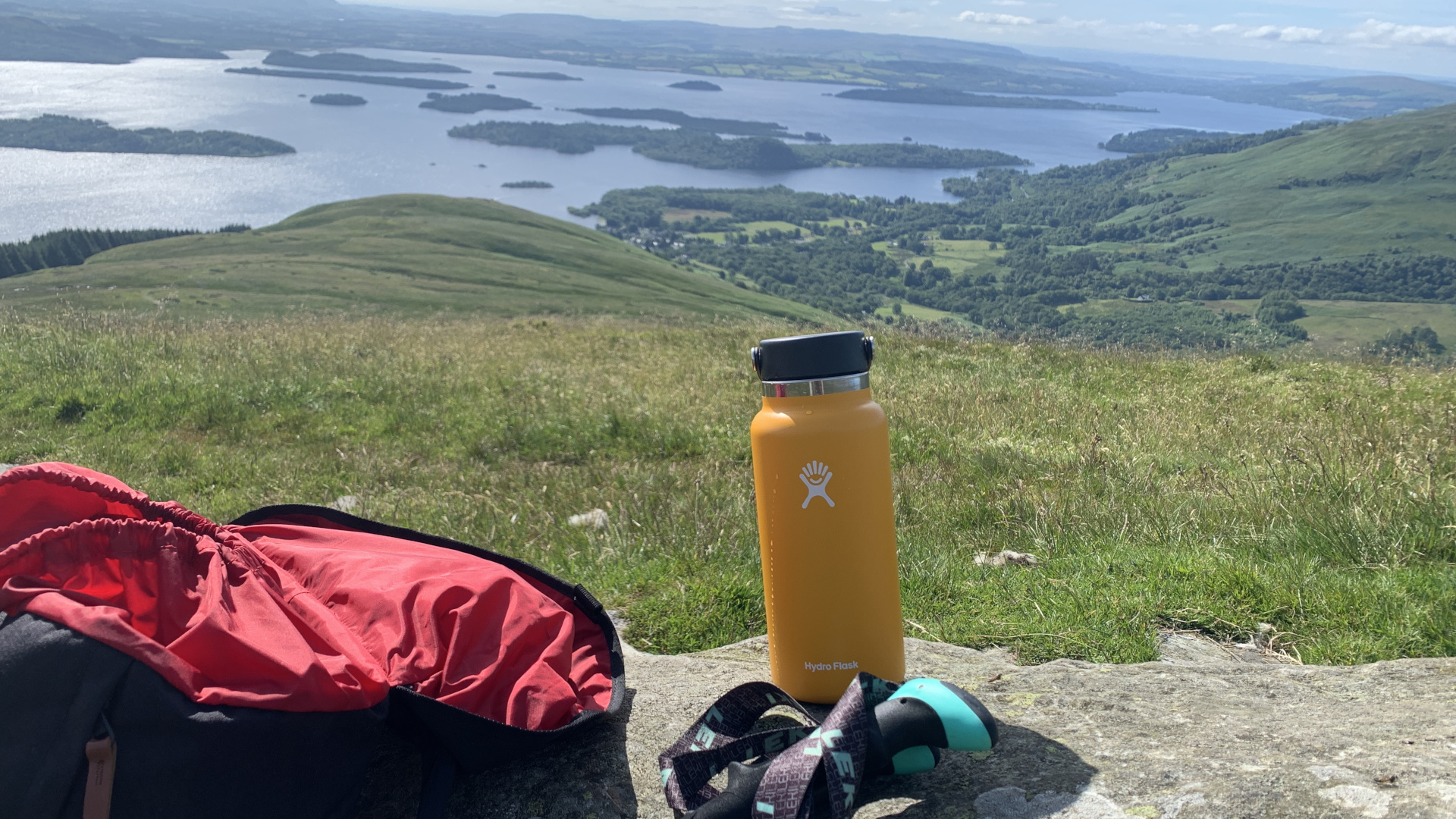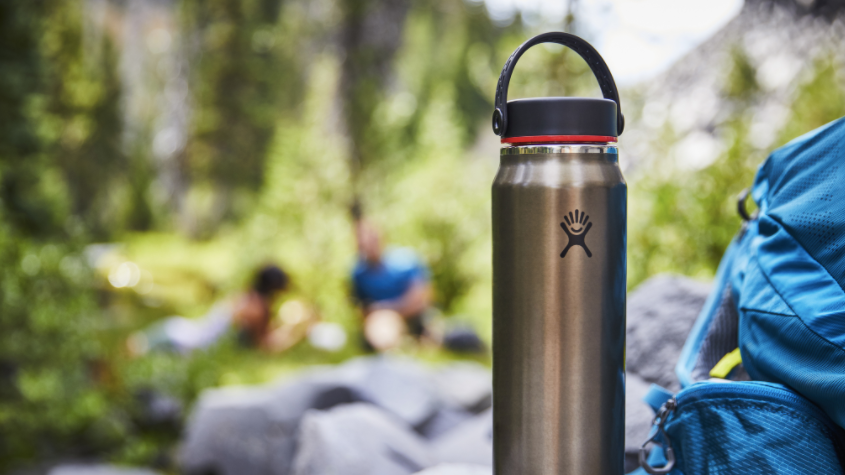Yeti vs Hydro Flask: the battle of the bottle
In Yeti vs Hydro Flask, we compare the heavyweight champions of the water bottle world to help you choose your next beverage tote

Reusable water bottles went from being practically non-existent to an everyday essential in only about a decade. It’s not that water bottles are particularly new, but as recently as the early 2000s, most hydration-conscious people simply re-used an old Evian bottle. Today, however, reusable water bottles are a permanent fixture in hiking backpacks and on desks across the globe. Forgetting your water bottle upon leaving for a hike or even for work is cause for a panic attack and Lost and Found boxes in gyms across the globe are now filled with forgotten water bottles waiting forlornly to be reunited with their owners.
As such, you might be considering finally upgrading from your old plastic sports bottle to a more sturdy beverage toter and if so, chances are you’re debating the merits of Yeti vs Hydro Flask. These two heavyweights of the water bottle world turn out some serious-looking drinks carriers, but are they all they’re cracked up to be? And which is best? We find out in Yeti vs Hydro Flask: the battle of the bottles.

Yeti vs Hydro Flask: the basics
Yeti and Hydro Flask both turn out some pretty similar-looking, high-performing drinkware. Both brands have flooded the market with magnum-sized, brightly colored water bottles that can be toted around easily using a carrying handle. Austin-based Yeti was founded in 2006 and is best-known for its gold-standard camping coolers. It sells drinkware such as water bottles and camping mugs under its Rambler line.
Hydro Flask was founded in 2009 in Bend, OR as a water bottle company and has more recently branched out into soft-sided camping coolers and camping kitchenware. Both companies make stainless steel, double-wall vacuum water bottles of various sizes that are designed to protect your beverage – hot or cold – from whatever is happening on the outside. These bottles have become very popular with outdoor enthusiasts as well as desk jockeys, particularly of the millennial variety.

Yeti vs Hydro Flask: price
First off, in case you don’t already know this, both Yeti and Hydro Flask water bottles are expensive. Like, priced to be the last water bottle you ever buy money. It’s a little difficult to compare them side by side since their water bottles aren’t the exact same size – Yeti runs theirs in 12oz/18oz/26oz/36oz/46oz increments whereas Hydro Flask make theirs in sizes 18oz/21oz/32oz/40oz.
That said, the two brands 18oz bottles both come in at around $30 while a Yeti Rambler 26oz bottle is the same price as the slightly smaller 24oz Hydro Flask ($40) so depending on what size you’re looking for, you might get a little more for your money with a Yeti. What you’re not going to get with either brand, however, is a bargain.

Yeti vs Hydro Flask: insulation and materials
When it comes to construction, Yeti and Hydro Flask bottles are pretty comparable. Both are made using stainless steel and have double-wall vacuum insulation, which means that they’ll keep your liquids hot for a long time even if it’s cold outside, cold for a long time even if it’s hot outside, and won’t have condensation build up on the outside in either set of conditions.
All the latest inspiration, tips and guides to help you plan your next Advnture!
That said, in our gear tests, neither option will keep your drink warm beyond a typical long hiking day, so if you’re preparing a flask of tea the night before, you’re likely to have a disappointing morning. Bring a camping stove and make it fresh.

Yeti vs Hydro Flask: weight
Clearly, the size of the bottle you buy will determine how heavy it is, but both of these beverage brutes are going to weigh more than your old plastic squeeze bottle. That said, in comparing a couple of models, we did notice quite a difference in their weight. Yeti’s 26oz Rambler weighs a whopping 22oz empty, whereas Hydro Flask’s 32oz comes in at just over 15oz for a considerably larger capacity.
Of course, once those two bottles are full, the one with more liquid will weigh more, but empty, it seems like you can shave off a few more ounces with a Hydro Flask, which matters if it’s going in your hiking backpack, but not if it’s going on your desk.

Yeti vs Hydro Flask: ease of use and cleaning
Water bottles shouldn’t be difficult to use. You want to be able to remove the lid, take a swig and seal it up again without having to think too hard or taking an unintentional bath, and fortunately both brands have made their bottle largely idiot-proof. What type of cap or lid your bottle has kind of depends on the model you buy, but both brands will conveniently sell you a different type of lid such as a mag slider or straw lid so that you can customize your drinkware to suit your preferences. Pricing for these is similar, though Hydro Flask seems to have sold out of a lot of its caps and lids.
Both brands are well-known for the wide mouths of their water bottles, which makes it easy to drink from, through also easy to dump water all over your shirt. For this reason, we particularly like the screw on/off chug cap that Yeti makes, which is separate from the lid, meaning it’s well protected and easy to clean. Both brands have lids for their larger models which come with carrying handles, too.
Finally, both brands are now making their bottles dishwasher safe, which makes them even easier to clean when it’s time to wash your water bottle.

Yeti vs Hydro Flask: durability
Whether you get yourself a Yeti or a Hydro Flask, you’re looking at a fairly bulletproof piece of drinkware. These water bottles will all stand up to the test of time, although they do dent when dropped (arguably, the Hydro Flask dents more easily, which may be why it’s a bit lighter). The main thing that can break is the lid, and we’ve found the Yeti lids to be a bit sturdier in that regard, but because both can be replaced, it doesn’t mean that your bottle has to be lost to the mists of time when the lid cracks. Overall, the Yeti might be slightly more robust but both bottles are meant to last a lifetime and with normal use, they will.
| Header Cell - Column 0 | Yeti | Hydro Flask |
|---|---|---|
| Price | $40 for 26oz | $40 for 24oz |
| Insulation and materials | Stainless steel with double-wall insulation | Stainless steel with double-wall insulation |
| Weight | 26oz weight 22oz | 32oz weighs 15oz |
| Ease of use and cleaning | Order your favorite type of lid or cap and they're dishwasher safe | Order your favorite type of lid or cap and they're dishwasher safe |
| Durability | Dents easily when dropped, but otherwise bulletproof | Dents really easily when dropped, but otherwise bulletproof |
Yeti vs Hydro Flask: the verdict
Now that we’ve compared these two champions of water vessels, it’s clear that they’re very nearly comparable. They both look great and keep your drinks hot and cold for roughly the same duration, and while you might get a little more volume for your money and a slightly sturdier bottle in a Yeti, you’re also likely looking at a much heavier bottle in comparison. If you’re not actually taking yours out on a hike, this of course won’t matter at all.
If a few ounces will make a difference to your pack, you’ll want to give a Hydro Flask a second look, but if you’re looking for something really light and packable, give both models a miss and check out the Lifestraw Peak 1 Series Collapsible Water Bottle with Filter which weight next to nothing and compresses as you chug.
Julia Clarke is a staff writer for Advnture.com and the author of the book Restorative Yoga for Beginners. She loves to explore mountains on foot, bike, skis and belay and then recover on the the yoga mat. Julia graduated with a degree in journalism in 2004 and spent eight years working as a radio presenter in Kansas City, Vermont, Boston and New York City before discovering the joys of the Rocky Mountains. She then detoured west to Colorado and enjoyed 11 years teaching yoga in Vail before returning to her hometown of Glasgow, Scotland in 2020 to focus on family and writing.

